Chobe
The border process to enter Botswana was going very well, everyone was friendly and we were getting all the necessary stamps. Then…a very officious Customs lady bursting out of her large uniform came out and asked if we had any fresh meat while Julie was being asked by another official to wash her shoes. Botswana is trying to stop a spread of hoof and mouth disease, which is principally passed between animals, and despite our discouragements she was determined to look in our fridge. And that can only mean one thing – busted!
So for only the second time on our Follow the Sun journey (the other time was on leaving Russia) and more than 100 border crossings I had to open up the camper. Ms Officious was excited, she found some thawing sausages that were going on our braai that night and gleefully confiscated them. We tried to reason with her, then pleaded with her, but to no avail. She had successfully done her part in stopping the spread of hoof and mouth disease. At our expense.
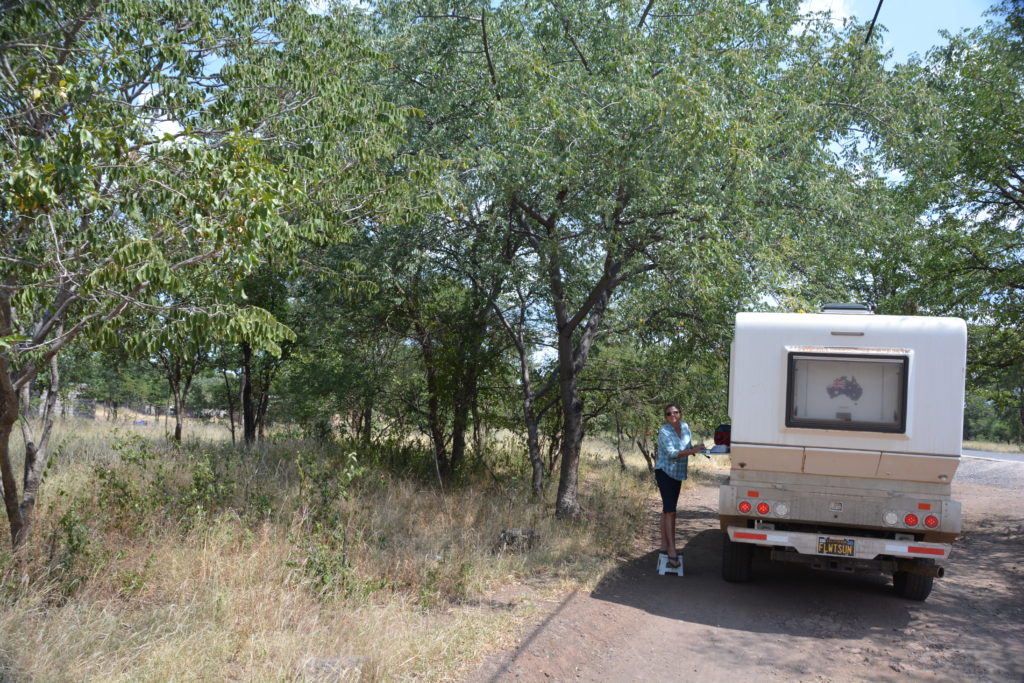
We finally made it through the border into Botswana and found this shady spot for lunch – only to find out later it was in front of the police station
But never mind, Botswana was a breath of fresh air compared to the challenges in Zimbabwe. For instance, petrol stations had petrol (wow!), Visa cards worked and the water was drinkable. We drove up the smooth highway to the northern town of Kasane where we camped for the night and for only the second time on our Africa journey, we ate dinner in a restaurant. And with good reason – we were celebrating our 500th day of Follow the Sun, which we passed in Zimbabwe a few days earlier.
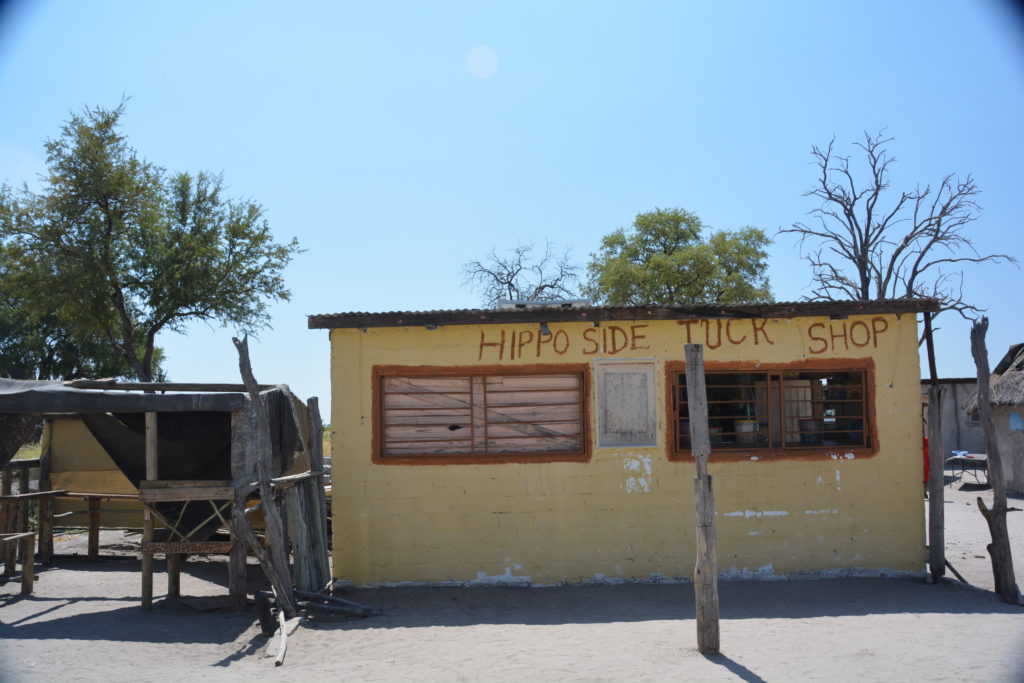
There’s a wide range of places to eat in northern Botswana but we did not choose this one to celebrate our 500th day on the road
But our focus was on Chobe National Park, Botswana’s premier park, chocablock full of animals set on the beautiful Chobe River. Botswana is an unusual place centred in the middle of Southern Africa. More administered than colonised in its earlier years, Botswana never suffered from Apartheid, and hosts side by side the amazing Okavango Delta and the imposing Kalahari Desert. Botswana definitely has the goods for visitors and they know they can charge for it. Campsite fees in their parks are as much as US$50 per person per night, paid in cash with crisp new notes if you don’t mind. Petrol and the supermarket prices are cheap for the locals but anything a tourist touches – game parks, hotels, campsites, etc – is astronomical. Sheesh.
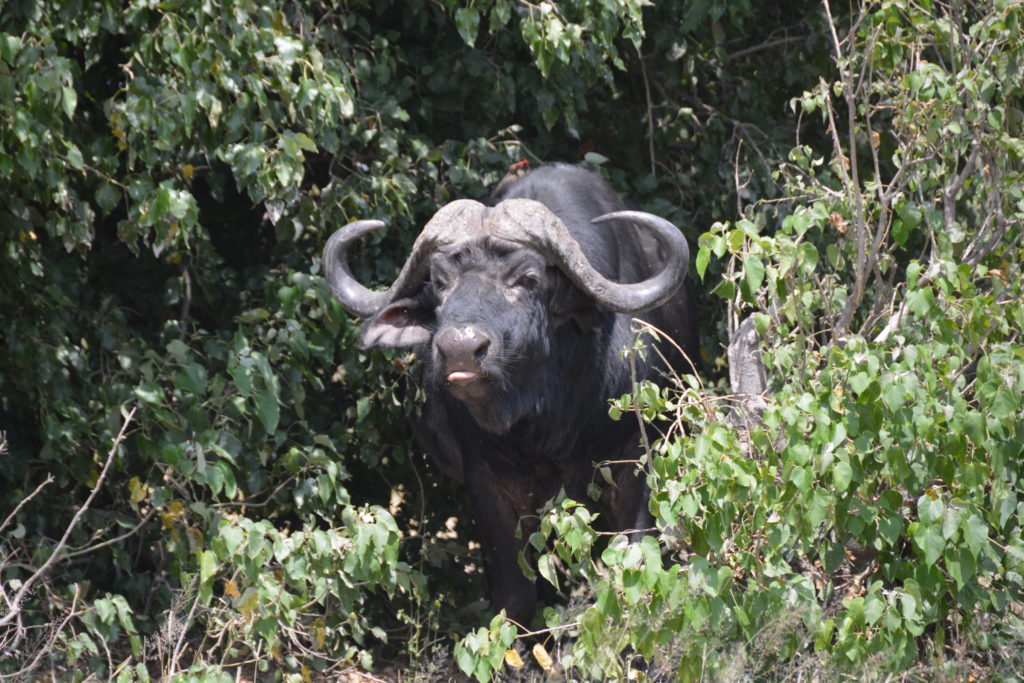
We didn’t like Botswana’s pricing policies for visitors but we loved their animals…even this not-so-handsome buffalo
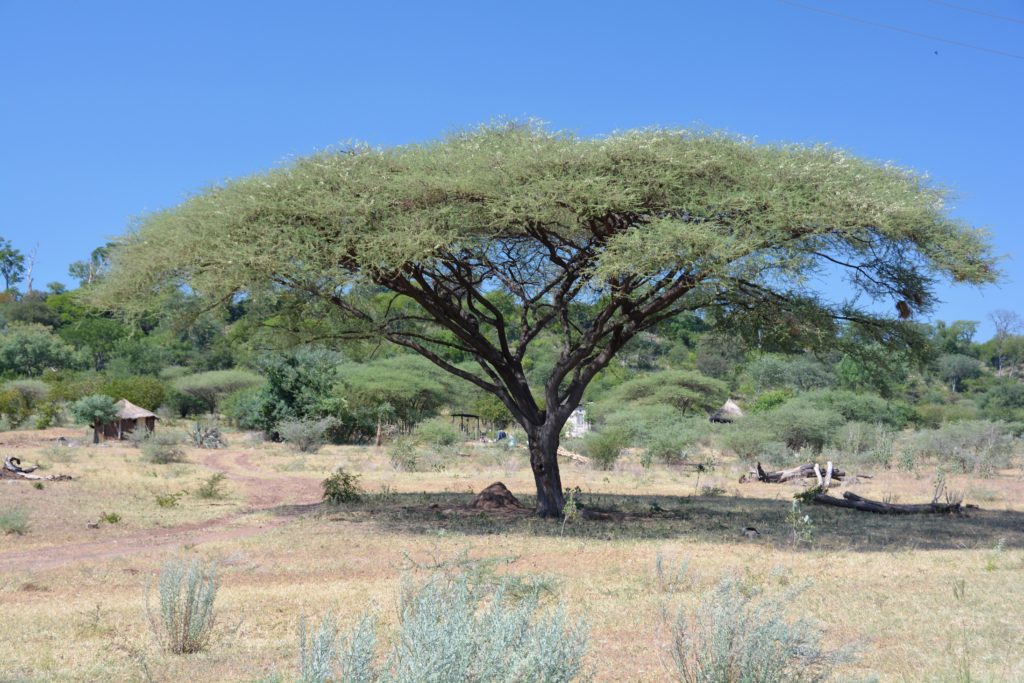
A perfectly proportioned umbrella tree, also called a thorn tree, one of Africa’s most visible and common trees
Well, we’ve come a long way and we knew in advance this was the case so we paid our money for two nights camping in different places and drove into one of the true gems of African game parks. The Chobe River flows into the Zambezi before it all falls over Victoria Falls but in the park the water provides easy access to a zoo of different animals who come down to drink, bathe and hunt each other.
Amongst all the wonderful encounters we had that day one of our favourites was finding by chance a leopard’s kill, probably a gennet (a small cat) hanging over the branch of a tree. We searched high and low but unfortunately couldn’t find the leopard itself. In the early afternoon we came upon eight beautiful young lions lolling about in the shade of a tree about ten metres from our track. These magnificent creatures couldn’t have cared less about us so Julie made our lunch (from the safety of her seat in Tramp!) and we enjoyed sandwiches while watching the lions do absolutely nothing.
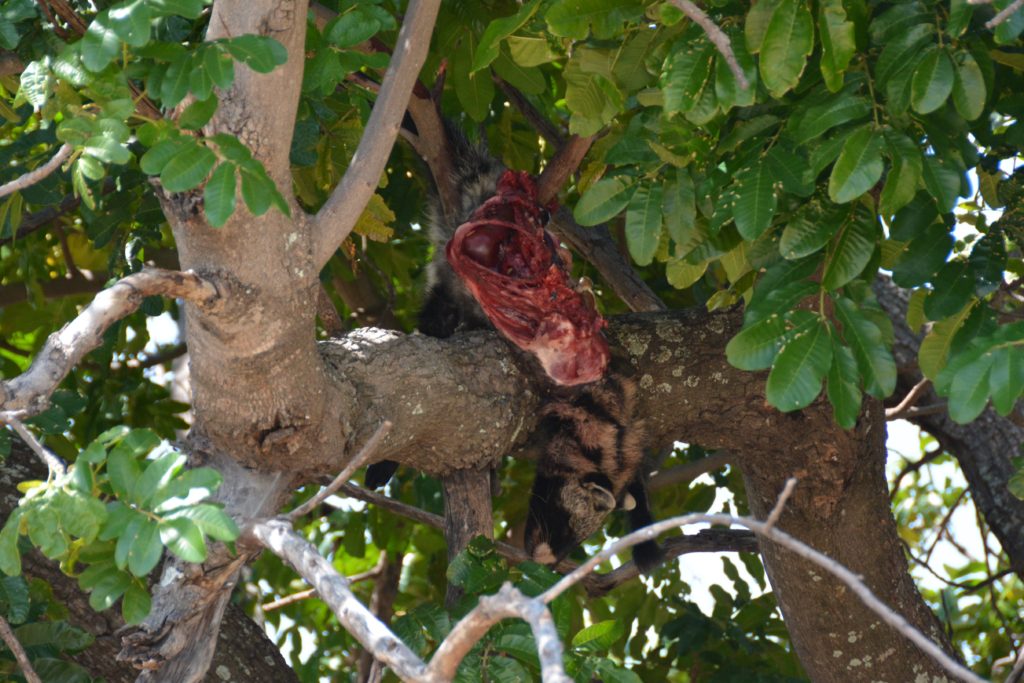
This cat wasn’t fast enough for a leopard who killed it and is their custom, stored it in a tree for future enjoyment. But where was the elusive leopard?
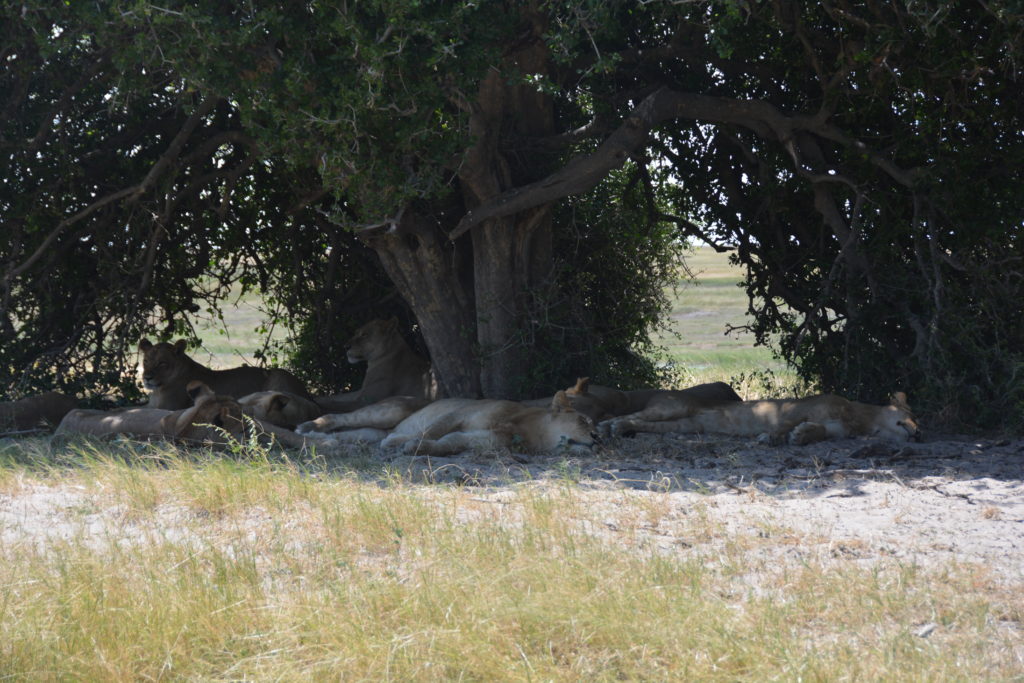
It’s hard work being a lion in Chobe and these eight beautiful creatures were taking their mid day nap
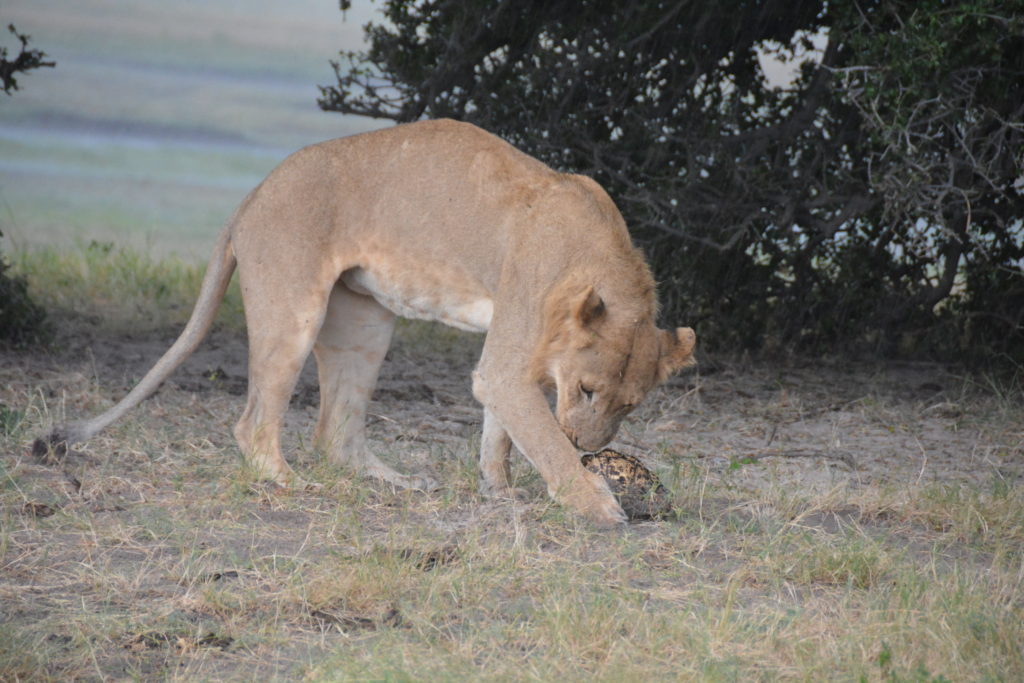
A rather foolish leopard tortoise decided to wander past these lions, one of which immediately saw it as a potential snack. Luckily for the tortoise it became nothing more than a roundish play thing

Wildebeests were a common sight in the park – curiously they seem to either travel in large herds or as solo complete loners
That afternoon we followed the track about ten kilometres back along the river and out through the sandy marshes to the tree with the leopard kill, hoping to finally see the leopard. And sure enough, luck was on our side, the leopard had returned to his kill and was casually guarding it from the comfort of the tall grass. We slowly moved closer in stages and he eventually climbed his tree which added to the comfort of both of us. What an experience, this magnificent beast in all his glory, his spotted coat a masterpiece, his dinner for this week nearby, laying on a flat branch of the tree trying to get a little extra snooze time. We couldn’t believe our good fortune.
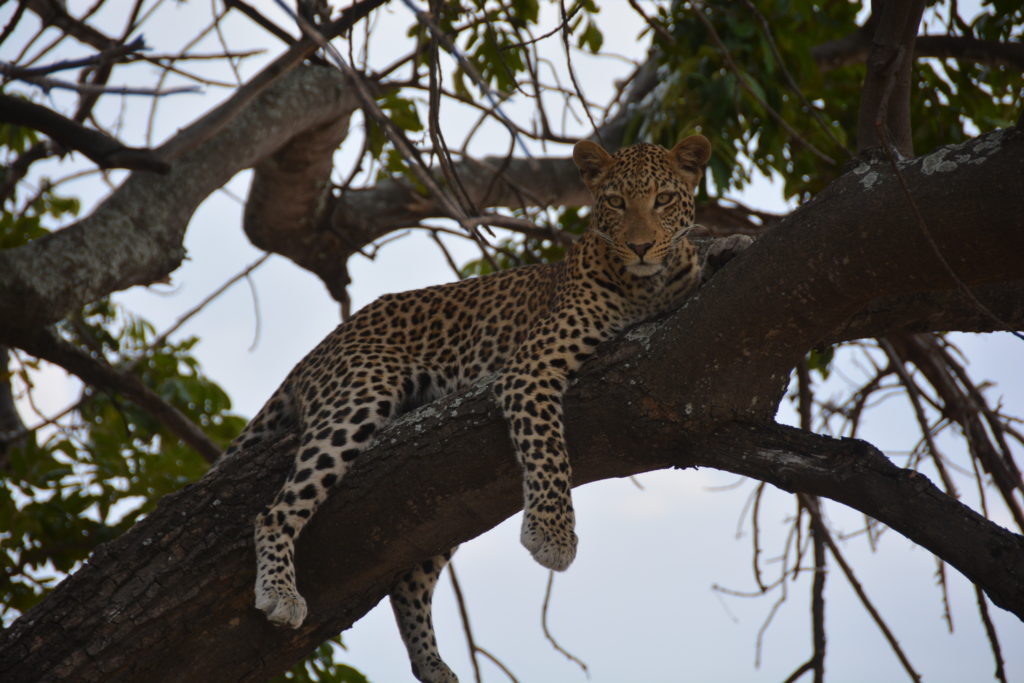
Possibly my favourite photo in all of Follow the Sun, our leopard climbed up into the tree and made himself comfortable for his afternoon snooze
That afternoon we also slowly drove through herd of buffalo, perhaps 500 or more, as they completed their afternoon migration to the river for a bit of drinking and mud wallowing. This was a scene akin to American bison crossing the central plains or the wildebeest in the Serengeti, just amazing. African buffalo are rarely on top of anyone’s list but when you see them in masse they are very impressive.

A huge herd of buffalo graze along the way as they slowly make their way to the water for an afternoon drink
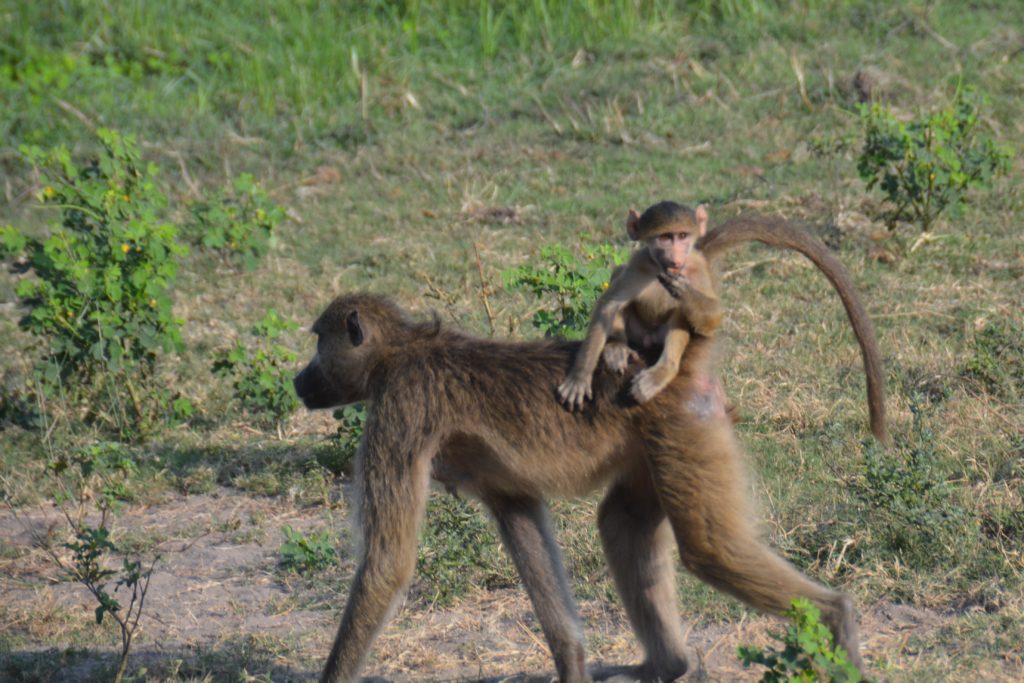
We’re not huge fans of baboons, they can be a real pest in our camps and can be very aggressive but you have to admit sometimes their babies are cute
We camped that night on the banks of the Chobe River, stunning views across the grass lands and river, impalas and baboons nearby. This was the first of our many crazy expensive campsites but when in Botswana you need to do as the rest of the visitors to Botswana and suck it up. Today paid dividends beyond our expectations. Try to forget the cost, Chobe rocks!
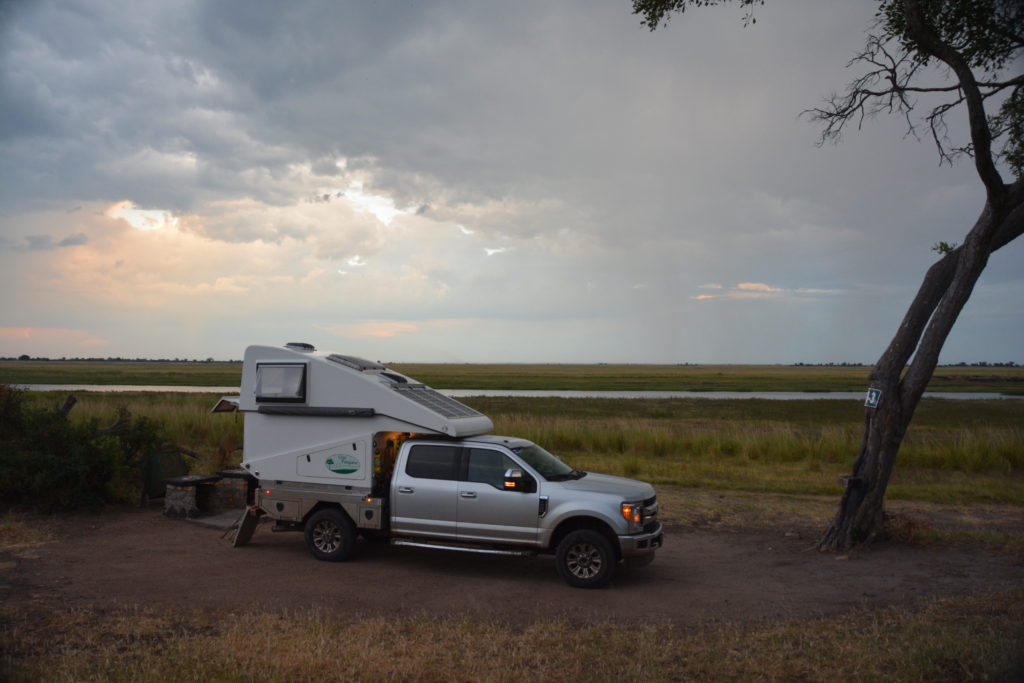
Campsites in Botswana’s national parks are completely unfenced and eye-wateringly expensive with basic facilities but at least you get good views
Chobe National Park is actually divided into three distinct areas and we had decided to visit two of the three. We followed the river upstream the next morning, hitting some bad patches of track which required substantial shovel work to bring it to Tramp’s minimum specifications, and came upon two linked herds of zebras, perhaps 150 striped animals in each herd, enjoying the morning water and long grasses. Zebras always make us smile, designed by children, entertainment for everyone, and when you see them by the hundreds it’s a fabulous experience.
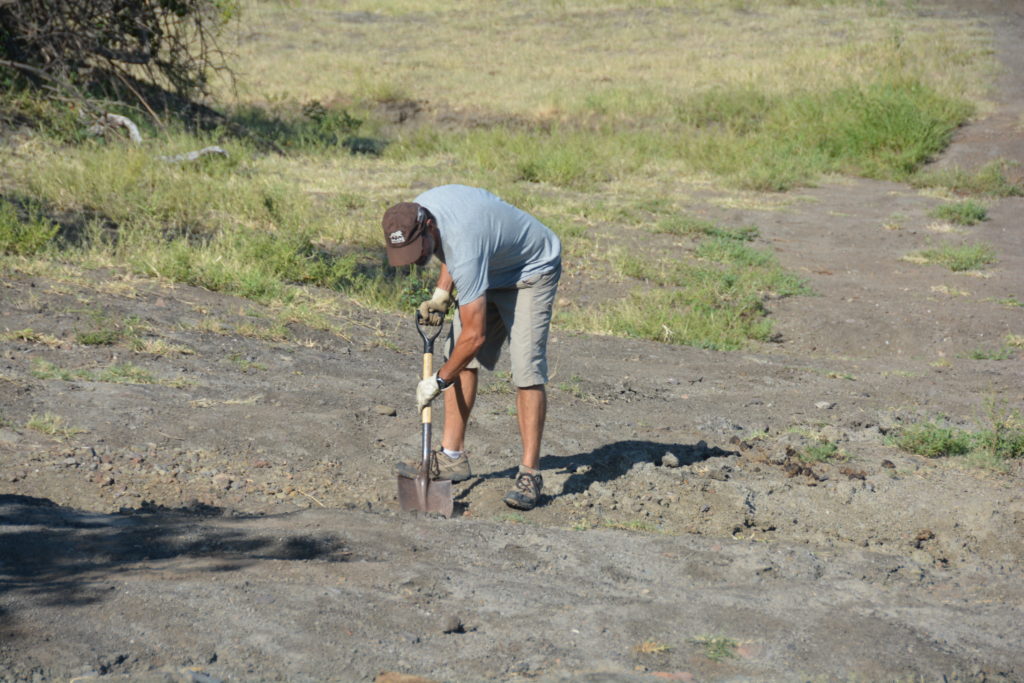
Tramp is tough but sometimes the tracks were a bit tricky when we are travelling alone so the solution is the magic shovel and a strong back
We left the park, had a short stint of paved road, then headed back into the sandy bush tracks. We knew from our maps we had 75 kilometres (45 miles) to get to Savuti Camp in the other part of the park but what we didn’t expect was for that entire distance to be deep heavy sand up and down large sand hills covered in trees, hard going in many sections for Tramp. Anyone who has driven the Simpson Desert in Australia knows what I mean. But despite carrying four tonnes, his 390 horsepower V8 engine ploughed through the sand, never failing us in four-wheel drive.
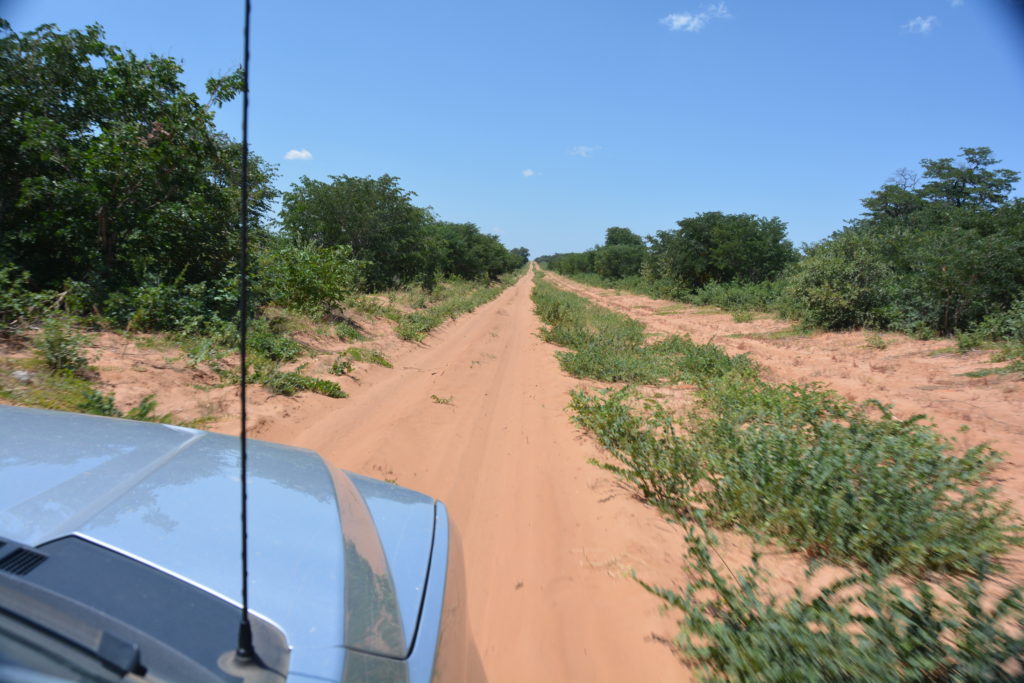
One of the flatter sandy sections of this section of road – driving in the sand is all about momentum!
It was an impressive performance, slightly tempered by his driver hitting a few sand bumps way too hard and flinging open all the cupboards and the fridge inside the camper. We have had this problem before and our solution is to tie the bed down (so it doesn’t become an airborne object inside the camper) and use generous amounts of duct tape to tape down the fridge and cupboards (never mind their latches, none can handle African roads).
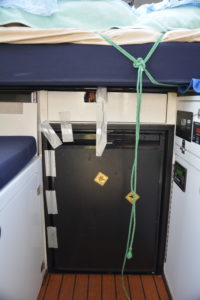
Some duct tape and our laundry rope kept the bed and food from flying around…except if the roads were real bad
When we opened Tramp the damage was there for all to see: some of our toiletries had flown from one cupboard, across the camper and ended up inside the open fridge, Julie’s yoghurt was flailed out across our rug, cutlery was under the bed mattress and more side panels had come free. It was a discouraging mess, to say the least.

No photos of the mess inside because it was a bit tense but here’s a view of where we had to clean up the mess from the outside
We made camp at Savuti, deep within the national park, at US$100 per night for the two of us this is the most expensive campsite on Follow the Sun (the previous most expensive was the night before at $70). Botswana is not for the feint of heart, by road or by wallet.
That afternoon we headed out on another afternoon game drive, focusing on waterholes of course. The wildlife was scarce by our high standard but we loved the beautiful drive through the open savannah, enjoyed two herds of elephants, a herd of wildebeests, some beautiful kudus, an African wild dog (rare), a black-backed jackal and more. That night we sat around our fire, loving the beautiful stars of the southern cross, all of it for free no matter where you.
The roaring lions in the distance all night and the hyenas that ravaged our rubbish bin were a fitting send off to our camp in Savuti. We headed south out of the park, a long soft sandy and bumpy track that tested our attention and absorbed the whole morning. By early afternoon we had reached the regional capital of Maun, a dusty sprawling city that deserved little attention. We attended to important administration issues because Botswana requires all campers in their parks to have forward bookings – not our strongest point – and we were planning to plunge back into their remote corners.
Chobe National Park had been fantastic – we saw the fifth of the Big 5 – the leopard, plus more lions, herds of animals, amazing scenes, challenging roads. But Botswana has much more to offer and we were about to dive into more of it!


















Loving the amazing photos, and I almost feel I am there with you, but without the dread if something moved, or the sound of night noises!
Your stories are just wonderful.
Hi Anne, we’re getting better at viewing the animals, knowing our distances and recognising animals from far off. The only thing we still get the jitters about is the lion roars around camp at night. That menacing roar keeps it all very real.